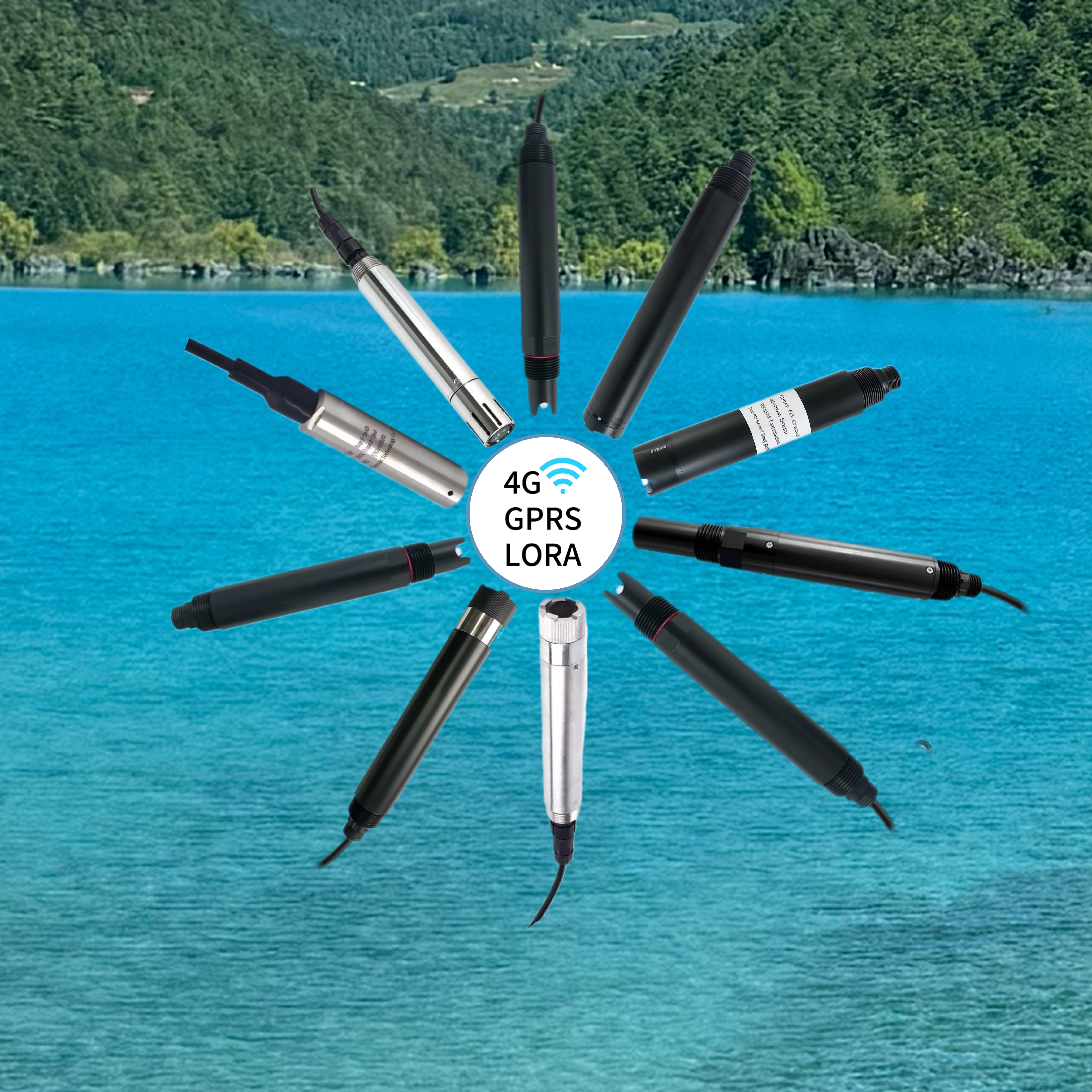Views: 0 Author: Site Editor Publish Time: 2025-11-03 Origin: Site

The definition of water quality sensors
A water quality sensor is an analytical device capable of detecting one or more specific physical or chemical properties in water bodies and converting the concentration or intensity of these properties into electrical signals that can be recorded, displayed and processed.
In simple terms, its core functions are "perception" and "transformation" :
Perception: Through specific sensitive elements (such as electrodes, membranes, optical probes), physical or chemical reactions occur with the target substances in the water sample.
Conversion: Convert the changes caused by the reaction (such as potential, current, light intensity, and temperature changes) into standardized electrical signals (such as 4-20mA current, digital signals).
Water quality sensors are the fundamental units for building modern water quality monitoring systems, such as online automatic monitoring stations, buoys, and mobile monitoring vessels.
2. What are the conventional 5 parameters for measurement?
The five conventional parameters of water quality are the most fundamental and core indicators for evaluating the basic status of water quality. They usually include:
Temperature: It affects the dissolved oxygen in water, the activity of microorganisms and the rate of chemical reactions, and is a fundamental parameter that needs to be corrected in almost all measurements.
pH value: It characterizes the acidity or alkalinity of water bodies and has a decisive impact on the survival of aquatic organisms and the migration and transformation of pollutants.
Dissolved oxygen: It refers to the concentration of molecular oxygen dissolved in water and is a key indicator for measuring the self-purification capacity of water bodies and assessing the survival status of aquatic organisms.
Conductivity: It indirectly characterizes the total concentration of dissolved ions in water (i.e., salinity or total dissolved solids TDS), and can be used to determine the degree of mineralization or pollution of water bodies.
Turbidity: It indicates the degree to which water bodies impede the passage of light, caused by suspended particles in water (such as sediment, algae, and organic matter), and is an important indicator of sensory properties and cleanliness.
Note: In certain specific scenarios, the "five parameters" may vary slightly. For instance, "REDOX potential" or "salinity" may sometimes be included, but the above five are the most common and recognized definitions.
3. What types of optical sensors are included?
Optical sensors measure based on the interaction principles between substances and light (such as absorption, scattering, fluorescence, phosphorescence, etc.). They usually have the advantages of no need for reagents, fast response and being less susceptible to electromagnetic interference.
The main types include:
Ultraviolet-visible light absorption spectrum sensor
Principle: Measure the degree to which water samples absorb ultraviolet or visible light of specific wavelengths, and calculate the concentration of pollutants based on Beer-Lambert's law.
Application: Measuring COD (Chemical Oxygen Demand), NO3-N (nitrate nitrogen), TOC (Total Organic Carbon), specific organic substances (such as benzene series substances), etc.
Fluorescence sensor
Principle: Light of a specific wavelength (excitation light) is shone on the water sample, and the intensity of the longer wavelength light (emission light) emitted by the substance after it is excited is measured.
Application
Chlorophyll a sensor: By measuring the fluorescence intensity of chlorophyll in algae, it estimates the concentration of algae and is an important tool for early warning of algal blooms.
CDOM/FDOM sensors: Measure the concentration of colored/fluorescent dissolved organic matter, used for tracking organic pollution and assessing water eutrophication.
Petroleum sensors: Utilizing the fluorescence characteristics of polycyclic aromatic hydrocarbons in crude oil, they monitor oil pollution.
Turbidity/scattered light sensor
Principle: Measure the scattering intensity of light by suspended particles in water. Detectors with an Angle of 90° or 180° (transmitted light) are usually used.
Application: Direct measurement of turbidity.
Laser spectrum sensor
Principle: Using laser as the light source, it has the advantages of good monochromaticity and high brightness, and can achieve extremely sensitive measurements, such as Raman spectroscopy and tunable diode laser absorption spectroscopy.
Application: It is used to measure dissolved gases (such as methane CH4, carbon dioxide CO2) and various trace pollutants.
4. What types of ion sensors are included?
Ion sensors are mainly used to detect the concentration of specific ions in water, and their core lies in ion-selective electrodes or similar electrochemical sensing technologies.
The main types include:
Ion-selective electrode
Principle: At the top of the electrode, there is a special ion-selective membrane that only responds to the target ion, thereby generating a potential difference on both sides of the membrane. The magnitude of this potential difference is directly proportional to the logarithm of the ion concentration (Nernst equation).
Common types
pH electrode: The most classic ISE, sensitive to H+.
Ammonia nitrogen electrode: It measures NH3 in water through a gas permeation membrane and then converts it into ammonia nitrogen concentration.
Nitrate electrode: Measures NO3-.
Fluoride electrode: Measures F-.
Cyanide electrode: Measures CN-.
Calcium, potassium, sodium, chloride ion electrodes, etc.
Volt-ampere sensor
Principle: By applying a varying voltage to the working electrode, the current generated by the REDOX reaction is measured. The peak current is related to the ion concentration.
Application: It is often used to measure heavy metal ions, such as lead Pb⊃2;⁺, cadmium Cd⊃2;⁺, copper Cu⊃2;⁺, zinc Zn⊃2;⁺, etc., with extremely high sensitivity.
Summary and comparison
Sensor category | Core principle | Advantages | Typical measurement indicators |
Optical sensor | The interaction between light and matter (absorption, scattering, fluorescence) | It requires no reagents, has a fast response, can be continuously monitored, and requires relatively low maintenance | Turbidity, COD, chlorophyll a, nitrate, dissolved organic matter |
Ion sensor | Changes in electrochemical potential or current (ion-selective membranes, REDOX reactions) | Good selectivity, direct measurement, and applicable to multiple ions | Ammonia nitrogen, nitrate, fluoride, cyanide, pH, various heavy metal ions |
content is empty!
content is empty!